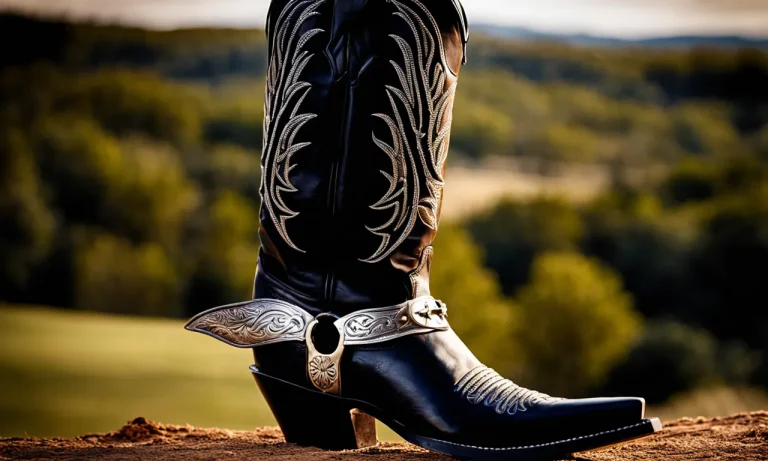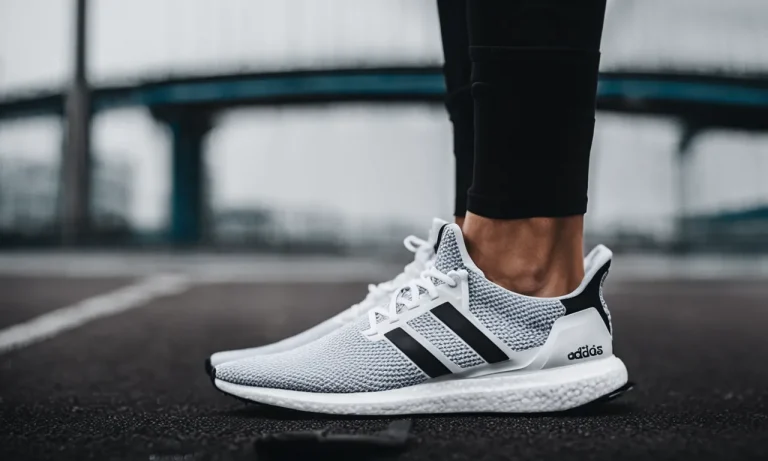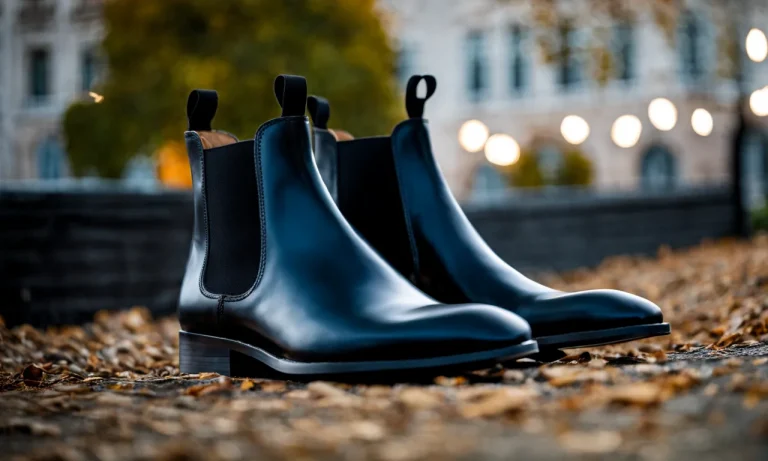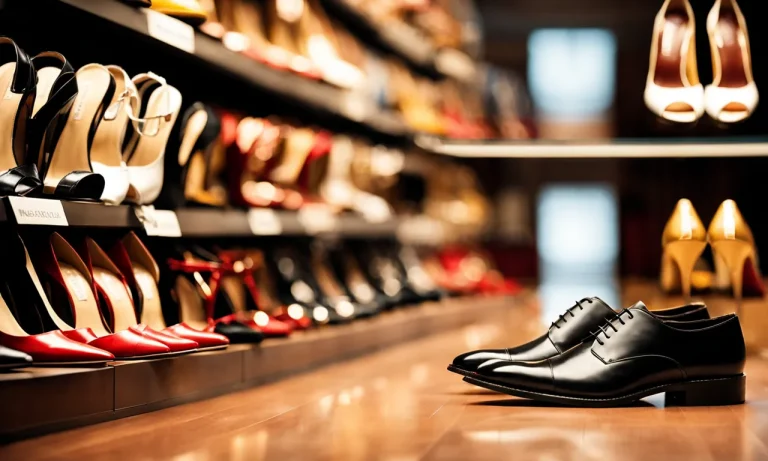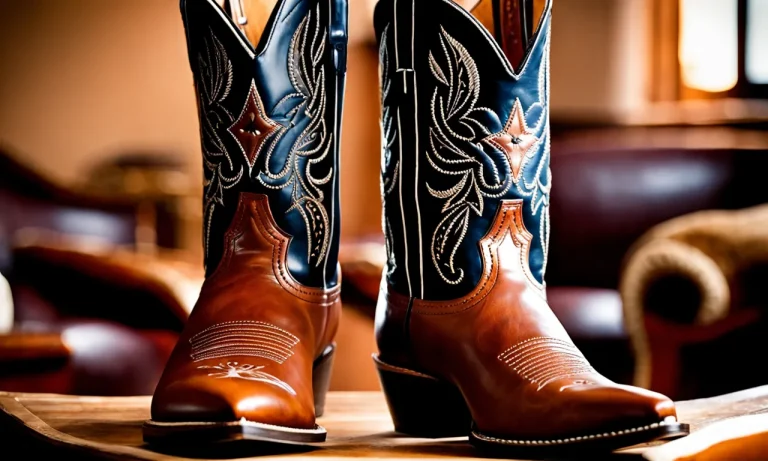Struggling to find the right shoe size that fits just right? You’re not alone. Many people find themselves caught between two sizes, making shoe shopping a frustrating experience. But with the right information and tips, you can solve the in-between shoe size dilemma once and for all.
If you’re short on time, here’s a quick answer to your question: Look for shoes that provide adjustable sizing features like laces, straps, or elastic. You can also try on both sizes to see which feels better. Consider going up a half size for wide feet or down a half size for narrow feet.
Add inserts if needed. Shop later in the day when feet are most swollen.
In this comprehensive guide, we’ll cover everything you need to know about being in between standard shoe sizes. You’ll learn tips for determining your true size, find the best shoe brands for half sizes, discover how to make shoes fit better, and more.
With the right approach, you can finally get the perfect shoe fit whether you’re a 6.5, 7.5 or any size in between.
Determining Your True Shoe Size
When it comes to finding the perfect fit for your shoes, determining your true shoe size is crucial. Here are some methods you can use to accurately measure your feet:
Use a Brannock Device
The Brannock Device is a measuring tool commonly found in shoe stores. It provides precise measurements of both the length and width of your feet. By using this device, you can determine your true shoe size and find the perfect fit.
Don’t hesitate to ask a store associate for assistance if you’re unsure how to use it.
Trace Your Foot
If you don’t have access to a Brannock Device, you can use a simple tracing method to measure your feet. Place a piece of paper on the floor and stand on it. Trace the outline of your foot with a pen or pencil.
Measure the length from the heel to the longest toe, and the width at the widest part of your foot. Use these measurements as a guide when selecting shoe sizes.
Try Different Sizing Methods
Sometimes, shoe sizes can vary between different brands or styles. It’s important to try on shoes in different sizes to find the best fit for your feet. Don’t be afraid to go a size up or down if necessary.
Remember that comfort is key, and it’s better to have a slightly bigger or smaller shoe size than one that causes discomfort or pain.
Consider Other Factors Impacting Fit
While shoe size is an important factor in finding the right fit, there are other factors that can impact how a shoe feels on your feet. Consider the shoe’s width, arch support, and material. Some shoes may run narrow or wide, so be mindful of these factors when making your decision.
Remember, finding the perfect fit may require some trial and error. Don’t get discouraged if you have to try on multiple pairs before finding the right one. Your comfort and foot health are worth the effort!
Finding the Best Shoes for In-Between Sizes
When you find yourself in between shoe sizes, it can be a frustrating experience. Luckily, there are a few strategies you can employ to ensure you find the perfect fit. Here are some tips to help you find the best shoes for in-between sizes.
Look for Adjustability
One option is to look for shoes that offer adjustability. This could be in the form of straps, laces, or even elastic bands. These features allow you to customize the fit of the shoe to accommodate your in-between size. Adjustable shoes can provide a more secure and comfortable fit.
Try Wide and Narrow Options
If you’re finding that regular width shoes are too tight and wide width shoes are too loose, consider trying shoes in both wide and narrow options. Some brands offer shoes in multiple widths, allowing you to find a better fit for your feet.
By experimenting with different widths, you may be able to find a shoe that fits you perfectly.
Shop Brands With Half Sizes
Another option is to shop brands that offer half sizes. While not all brands have this option, some do, and it can make a significant difference in finding a comfortable shoe. Half sizes provide a more precise fit, allowing you to avoid the discomfort of a shoe that is either too tight or too loose.
Look for brands that offer half sizes in the specific style you are interested in.
Try Children’s or Men’s Sizes
If you have smaller feet, trying children’s sizes may be an option worth considering. Children’s shoes often come in a wider range of sizes and can be more forgiving for in-between sizes. Similarly, if you have larger feet, trying men’s sizes may be a viable solution.
Just keep in mind that men’s shoes may have a slightly different fit and style compared to women’s shoes.
Remember, finding the perfect fit may require some trial and error. Don’t be afraid to try different sizes, styles, and brands until you find the shoe that feels just right. And always prioritize comfort and support over style alone. Happy shoe shopping!
Making Shoes Fit Better
When you find yourself in between shoe sizes, it can be frustrating to find the perfect fit. However, there are several solutions that can help make your shoes fit better and more comfortably. Here are some helpful tips:
Add Inserts or Insoles
If your shoes are slightly too big, adding inserts or insoles can provide extra cushioning and fill up the empty space. These can be purchased at shoe stores or online, and they come in various thicknesses and materials to suit your needs.
Inserts and insoles not only help make your shoes fit better, but they also provide additional support and comfort for your feet.
Use Moleskin, Gel Pads, or Tape
For shoes that are slightly too small and causing discomfort, using moleskin, gel pads, or tape can help alleviate pressure points and provide relief. Moleskin is a soft, adhesive material that can be placed on areas that rub against your skin.
Gel pads offer cushioning and can be applied to areas where you experience pain or discomfort. Alternatively, using tape to create a barrier between your skin and the shoe can also help prevent blisters and irritation.
Use a Shoe Stretcher
If your shoes are just a little too tight, using a shoe stretcher can help expand the width or length of the shoe. Shoe stretchers can be found at shoe repair shops or purchased online. They are adjustable and can be used to gently stretch the material of the shoe to provide a better fit.
It’s important to follow the instructions carefully to avoid damaging your shoes.
Lace Techniques for Adjustable Fit
Another way to make your shoes fit better is by using different lacing techniques. Depending on the areas that feel tight or loose, you can adjust the laces to provide a more customized fit. For example, if the top of your foot feels tight, you can try skipping a few eyelets or using a looser lacing style.
On the other hand, if your shoes feel loose around the ankle, you can try using a tighter lacing technique to secure your foot better.
Wear Thicker or Thinner Socks
Changing the thickness of your socks can also make a difference in how your shoes fit. If your shoes are slightly big, wearing thicker socks can help fill up the extra space. Conversely, if your shoes are a bit tight, wearing thinner socks can provide a little more wiggle room.
Experimenting with different sock thicknesses can help you find the perfect fit.
Remember, finding the perfect fit may require some trial and error. It’s essential to prioritize comfort and avoid wearing shoes that are too tight or too loose, as this can lead to foot problems in the long run.
By using these tips and techniques, you can make your shoes fit better and enjoy walking or running with ease.
When to Buy a Size Up or Down
When it comes to finding the perfect fit for your shoes, it’s important to consider whether you should buy a size up or down. Here are some factors to consider:
Size Up for Wide Feet
If you have wider feet, it’s often recommended to buy a size up. This allows for more room in the toe box, preventing any discomfort or pinching. It’s essential to prioritize comfort, especially if you plan on wearing the shoes for extended periods.
Keep in mind that not all shoe brands and styles fit the same, so it’s always a good idea to try on different sizes and styles to find what works best for you.
Size Down for Narrow Feet
On the other hand, if you have narrow feet, buying a size down may be the right choice. This helps to ensure a snug fit, preventing any slipping or sliding of your feet inside the shoes. However, be cautious not to choose a size that is too small, as this can lead to discomfort and foot pain.
Again, trying on different sizes and styles is crucial to finding the perfect fit.
Consider Typical Foot Swelling
It’s important to consider that our feet can swell throughout the day, especially if we are on our feet for long hours or engaged in physical activity. If you know that your feet tend to swell, it might be wise to buy shoes that are slightly larger to accommodate this swelling.
This will prevent any discomfort or tightness that may occur when your feet expand.
Account for Different Foot Shapes
Every person’s feet are unique, and it’s essential to consider your foot shape when determining whether to buy a size up or down. Some people have a higher arch or a wider midfoot, which may require a different shoe size.
It’s a good idea to consult with a shoe fitting specialist who can assess your foot shape and provide recommendations on the best size and style for you.
Factor in Activity Type
The type of activity you plan on engaging in while wearing the shoes is also a crucial factor to consider. For example, if you’re purchasing running shoes, it’s generally recommended to buy a half size up to allow for the natural expansion of your feet while running.
On the other hand, if you’re buying dress shoes for a formal event, a size down may be necessary to ensure a sleek and stylish fit.
Remember, finding the perfect fit for your shoes is essential for comfort and overall foot health. Don’t be afraid to try on different sizes and styles to find what works best for you. And always prioritize comfort over style, as your feet will thank you in the long run!
Caring for Shoes In Between Sizes
When you find yourself in between shoe sizes, it’s important to take extra care of your footwear to ensure their longevity and comfort. Here are some tips on how to care for your shoes when they don’t fit perfectly.
Use Shoe Trees
One way to care for your shoes in between sizes is to use shoe trees. Shoe trees not only help maintain the shape of your shoes but also help stretch them slightly to accommodate the in-between size. They can prevent creasing and wrinkling of the leather, keeping your shoes looking great for longer.
Spot Clean Regularly
Regular cleaning is essential to keep your shoes in good condition. When you’re in between sizes, it’s a good idea to spot clean your shoes regularly. Use a soft brush or cloth to remove dirt and debris, paying extra attention to any areas that may have stretched or become worn due to the sizing issue.
Use Waterproofing Sprays
Waterproofing sprays can help protect your shoes from water damage and stains. When your shoes are not a perfect fit, there may be small gaps that allow water to seep in. Using a waterproofing spray can help minimize the potential damage caused by moisture, keeping your shoes looking great and lasting longer.
Rotate Shoes
Another way to care for your shoes in between sizes is to rotate them. Wearing the same pair of shoes every day can lead to increased wear and tear. By rotating your shoes and giving them a break, you can extend their lifespan and minimize any discomfort caused by the in-between size.
Store Properly When Not Worn
Proper storage is crucial for maintaining the condition of your shoes. When you’re not wearing your shoes, make sure to store them properly. Use shoe bags or boxes to protect them from dust and keep them in a cool, dry place. This will help prevent any further stretching or damage to the shoes.
By following these tips, you can ensure that your shoes stay in great shape even when you’re in between sizes. Remember, taking care of your shoes not only extends their lifespan but also enhances your overall comfort and style.
Conclusion
Being in between shoe sizes can make finding the perfect fit a real challenge. But armed with the right techniques and tips, you can solve the half-size dilemma. Taking time to accurately determine your foot measurements, looking for adjustable sizing features, and using fit enhancement products can help any shoe become more comfortable.
Just remember to have patience finding that Cinderella slipper-like fit. With the strategies in this guide, the shoe will soon be on the other foot and you’ll be walking around with happiness and relief.

